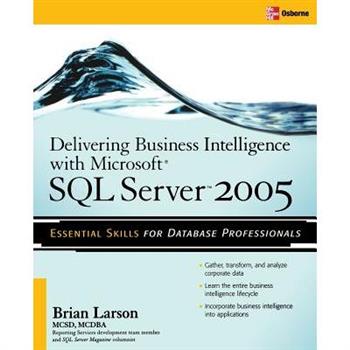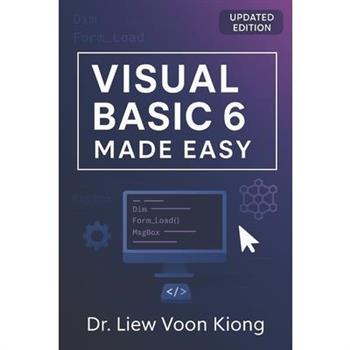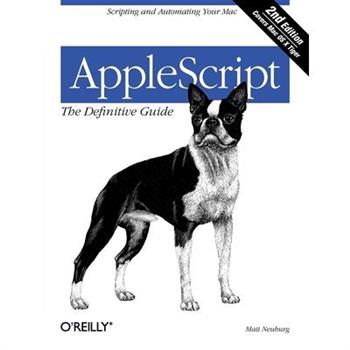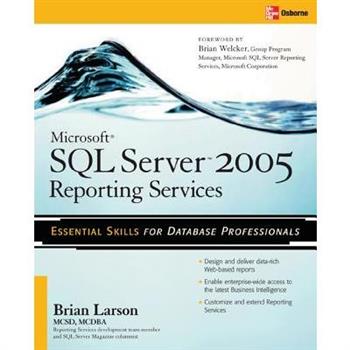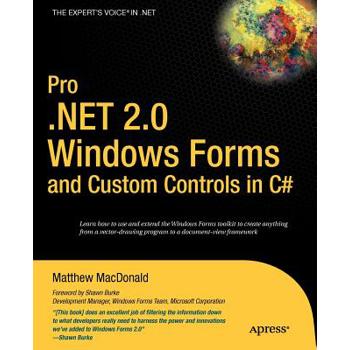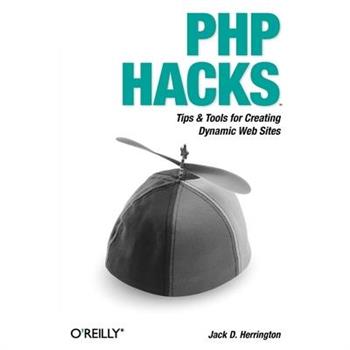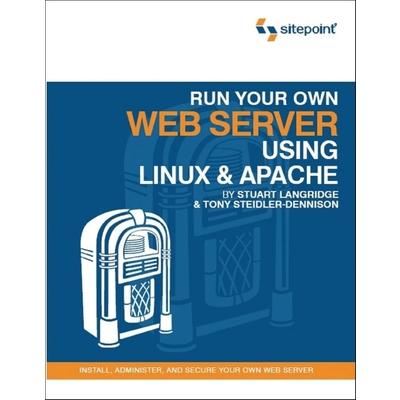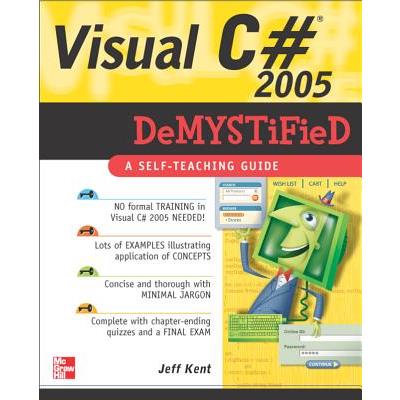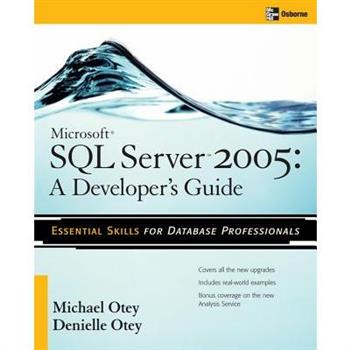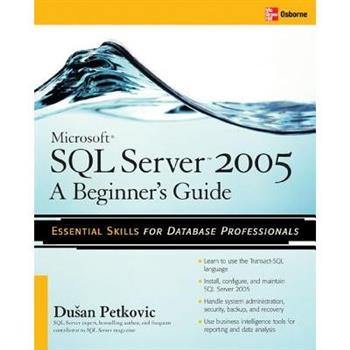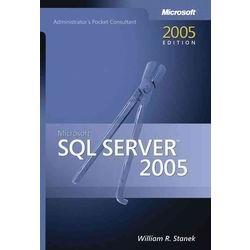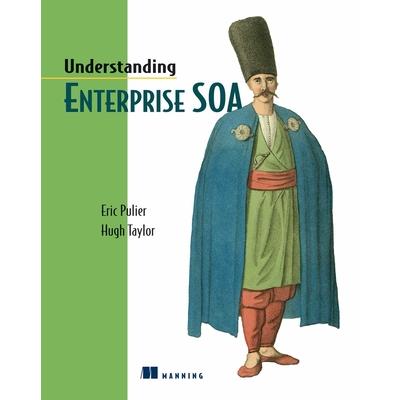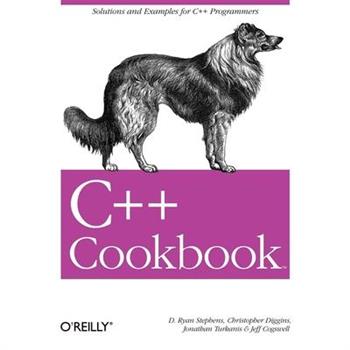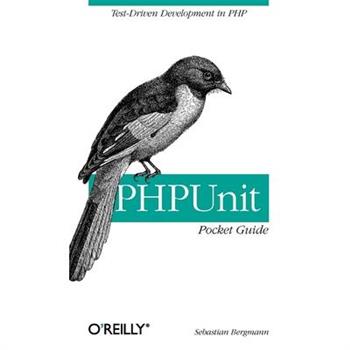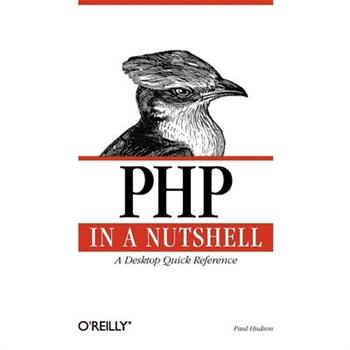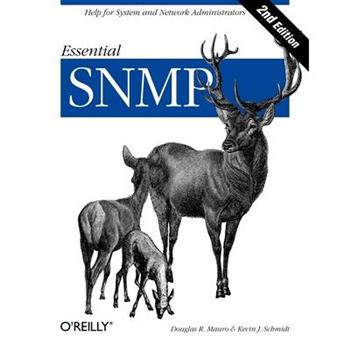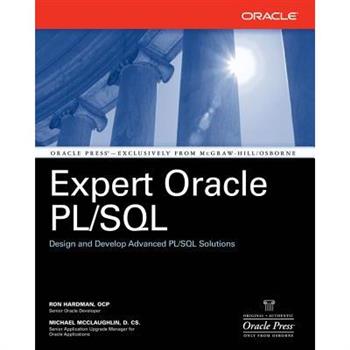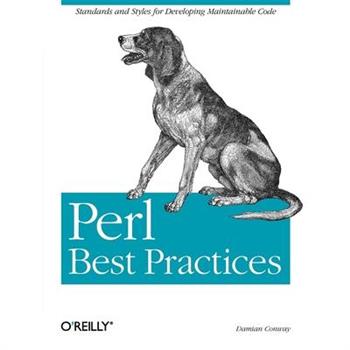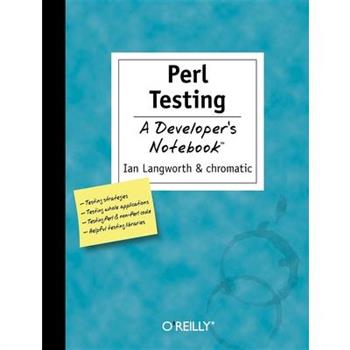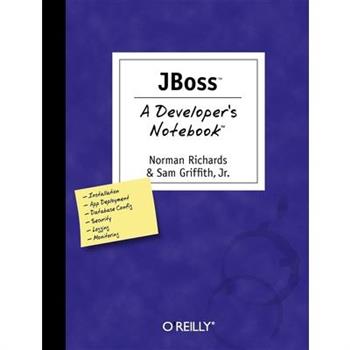Delivering Business Intelligence with Microsoft SQL Server 2005
Publisher's Note: Products purchased from Third Party sellers are not guaranteed by the publisher for quality, authenticity, or access to any online entitlements included with the product.Transform disparate enterprise data into actionable business intelligencePut timely, mission-critical information in the hands of employees across your organization using Microsoft SQL Server 2005 and the comprehensive information in this unique resource. Delivering Business Intelligence with Microsoft SQL Server 2005 shows you, step-by-step, how to author, customize, and distribute information that will give your company the competitive edge. It's all right here--from data mining, warehousing, and scripting techniques to MDX queries, KPI analysis, and the all-new Unified Dimensional Model. Real-world examples, start-to-finish exercises, and downloadable code throughout illustrate all of the integration, analysis, and reporting capabilities of SQL Server 2005.
Visual Basic 6 Made Easy
Visual Basic(R) 6 made easy is written by the author of the popular online Visual Basic tutorial at www.vbtutor.net. This book presents the basics of Visual Basic programming using direct and simple language so that you can learn Visual Basic programming easily and quickly.
Applescript: The Definitive Guide
Mac users everywhere--even those who know nothing about programming--are discovering the value of the latest version of AppleScript, Apple's vastly improved scripting language for Mac OS X Tiger. And with this new edition of the top-selling AppleScript: The Definitive Guide, anyone, regardless of your level of experience, can learn to use AppleScript to make your Mac time more efficient and more enjoyable by automating repetitive tasks, customizing applications, and even controlling complex workflows. Fully revised and updated--and with more and better examples than ever--AppleScript: The Definitive Guide, 2nd Edition explores AppleScript 1.10 from the ground up. You will learn how AppleScript works and how to use it in a variety of contexts: in everyday scripts to process automation, in CGI scripts for developing applications in Cocoa, or in combination with other scripting languages like Perl and Ruby. AppleScript has shipped with every Mac since System 7 in 1991, and its ease of use and English-friendly dialect are highly appealing to most Mac fans. Novices, developers, and everyone in between who wants to know how, where, and why to use AppleScript will find AppleScript: The Definitive Guide, 2nd Edition to be the most complete source on the subject available. It's as perfect for beginners who want to write their first script as it is for experienced users who need a definitive reference close at hand. AppleScript: The Definitive Guide, 2nd Edition begins with a relevant and useful AppleScript overview and then gets quickly to the language itself; when you have a good handle on that, you get to see AppleScript in action, and learn how to put it into action for you. An entirely new chapter shows developers how to make your Mac applications scriptable, and how to give them that Mac OS X look and feel with AppleScript Studio. Thorough appendixes deliver additional tools and resources you won't find anywhere else. Reviewed and approved by Apple, this indispensable guide carries the ADC (Apple Developer Connection) logo.
Microsoft SQL Server 2005 Reporting Services
Publisher's Note: Products purchased from Third Party sellers are not guaranteed by the publisher for quality, authenticity, or access to any online entitlements included with the product.Microsoft's Reporting Services product is a vital part of the SQL Server 2005 business intelligence platform, but it works with virtually any data sourceThis hands-on guide explains how to transform data into insightful and interactive Web-based reports using Microsoft SQL Server 2005 Reporting Services. With coverage of everything from installation to administration, the book demonstrates how to use this powerful server-based reporting solution to improve business decision-making and facilitate company-wide -- even worldwide -- communication.
Pro .NET 2.0 Windows Forms and Custom Controls in C#
By using C# and the final beta of NET 2.0, this book covers Windows Forms and GDI+ namespaces thoroughly for the .NET programmer in 2005. Experienced author Matthew MacDonald achieves this by combining careful treatment of the API with detailed discussion of solid user-interface design principles. This is an update for .NET 2.0 of MacDonald's previous edition (1590590457) which gained wide community recognition. Upon reading this edition, you will be equipped to design state-of-the-art Windows interfaces and program graphics, and know how to create your own controls
Pro JSP 2
Pro JSP 2, Fourth Edition is the only comprehensive guide and reference to cover JSP 2 and 2.1 yet. It equips readers with the tools, techniques, and understanding they need to develop web applications with JSP and Java servlets. The new features of the JSP 2.0, 2.1 and Servlet 2.4 specifications make developing web applications easier than ever before. With 2.1, readers can integrate and use the latest JavaServer Faces (JSF) 1.2 in J2EE 5 with JSP. Also, the JSP Expression Language (EL) provides a simple language for creating JSP pages and tags. In addition, by also using the JSP Standard Tag Library (JSTL), readers should never have to use a Java scriptlet or write spaghetti code again.
Pro Asp.net 2.0 Website Programming
This book shows you how to harness these new features in building websites that tackle real business problems. It provides insight into techniques and practices that help reduce maintenance costs, decrease development time, and manage user perception. It also discusses the business reasoning behind the techniques, not just the technical implementation. Each chapter identifies a common business requirement - such as managing logins, reporting, data searching and security - and the associated challenges and potential problems. It then goes on to demonstrate an effective ASP.NET 2.0-based solution. The author uses stories from his own experience to really drive home the point that these are real-world problems. Chapters will be presented as independent sections to allow readers to jump back and forth between the specific technologies they find interesting.
PHP Hacks
Programmers love its flexibility and speed; designers love its accessibility and convenience. When it comes to creating web sites, the PHP scripting language is truly a red-hot property. In fact, PHP is currently used on more than 19 million web sites, surpassing Microsoft's ASP .NET technology in popularity. Not surprisingly, this surge in usage has resulted in a number of PHP books hitting the market. Only one, though, takes the language beyond traditional Web programming and into mapping, graphing, multimedia, and beyond: PHP Hacks. In PHP Hacks, author Jack Herrington wrings out his 20 years of code generation experience to deliver hands-on tools ranging from basic PHP and PEAR installation and scripting to advanced multimedia and database optimizing tricks. On the practical side of things, PHP Hacks helps you develop more robust PHP applications by explaining how to improve your database design, automate application testing, and employ design patterns in your PHP scripts and classes. In the category of "cool," Herrington explains how to upgrade your Web interface through the creation of tabs, stickies, popups, and calendars. He even examines how to leverage maps and graphics in PHP. There's also a bounty of image and application hacks, including those that show you how to: Integrate web sites with Google maps and satellite imaging Dynamically display iPhoto libraries online Add IRC, SMS, and Instant Messaging capabilities to your Web applications Drop the latest Wikipedia dictionary onto your Sony PSP Render graphics and user interfaces with SVG, DHTML, and Ajax Whether you're a newcomer or an expert, you'll find great value in PHP Hacks, the only PHP guide that offers something useful and fun for everyone.
Run Your Own Web Server Using Linux and Apache
This book is for Web Developers who want to learn how to use Linux & Apache for Website Hosting. The first chapters will teach you how to install Linux and Apache 2.0 on a home or office machine for testing purposes. Then you'll learn how to perform dozens of common tasks including: Updating server softwareSetting up new Websites, Email Accounts and SubdomainsConfiguring various Linux & Apache files related to performance and securityInstall spam filtering softwarePerform automatic backups and crash recoveriesAnd much more.This is the ideal book for anyone who wants to run Websites using a leased or co-located Linux server, without having to spends thousands of dollars annually on third party support and management.
Xslt Cookbook
Forget those funky robot toys that were all the rage in the '80s, XSLT (Extensible Stylesheet Transformations) is the ultimate transformer. This powerful language is expert at transforming XML documents into PDF files, HTML documents, JPEG files--virtually anything your heart desires. As useful as XSLT is, though, most people have a difficult time learning its many peculiarities. And now Version 2.0, while elegant and powerful, has only added to the confusion. XSLT Cookbook, Second Edition wants to set the record straight. It helps you sharpen your programming skills and overall understanding of XSLT through a collection of detailed recipes. Each recipe breaks down a specific problem into manageable chunks, giving you an easy-to-grasp roadmap for integrating XSLT with your data and applications. No other XSLT book around employs this practical problem-solution-discussion format. In addition to offering code recipes for solving everyday problems with XSLT 1.0, this new edition shows you how to leverage the improvements found in XSLT 2.0, such as how to simplify the string manipulation and date/time conversion processes. The book also covers XPath 2.0, a critical companion standard, as well as topics ranging from basic transformations to complex sorting and linking. It even explores extension functions on a variety of different XSLT processors and shows ways to combine multiple documents using XSLT. Code examples add a real-world dimension to each technique. Whether you're just starting out in XSLT or looking for advanced techniques, you'll find the level of information you need in XSLT Cookbook, Second Edition.
Visual Basic 2005 Demystified
Publisher's Note: Products purchased from Third Party sellers are not guaranteed by the publisher for quality, authenticity, or access to any online entitlements included with the product.There's no easier, faster, or more practical way to learn the really tough subjectsVisual Basic 2005 Demystified fully explains the language and its libraries and applications. You'll even learn to create a Visual Basic program without writing code. This self-teaching guide comes complete with key points, background information, quizzes at the end of each chapter, and even a final exam. Simple enough for beginners but challenging enough for advanced students, this is a lively and entertaining brush-up, introductory text, or classroom supplement.
Visual C# 2005 Demystified
Publisher's Note: Products purchased from Third Party sellers are not guaranteed by the publisher for quality, authenticity, or access to any online entitlements included with the product.There's no easier, faster, or more practical way to learn the really tough subjectsVisual C# 2005 Demystified explains the language and its libraries and applications as well as how to use the integrated development environment. This self-teaching guide comes complete with key points, background information, quizzes at the end of each chapter, and even a final exam. Simple enough for beginners but challenging enough for advanced students, this is a lively and entertaining brush-up, introductory text, or classroom supplement.
Microsoft SQL Server 2005 Developer’s Guide
Publisher's Note: Products purchased from Third Party sellers are not guaranteed by the publisher for quality, authenticity, or access to any online entitlements included with the product.Developers will discover how to unleash the full power of Microsoft SQL Server 2005 with this developer's guide by best-selling author, Michael Otey. Completely rewritten and reengineered, this book will focus on the new programming models and will provide readers with all the information they need to produce top-quality commercial applications
Microsoft SQL Server 2005: A Beginner’’s Guide
Publisher's Note: Products purchased from Third Party sellers are not guaranteed by the publisher for quality, authenticity, or access to any online entitlements included with the product.Deploy and manage SQL Server 2005 with easeLearn to use all the powerful features available in SQL Server 2005 from this straightforward, hands-on guide. Set up SQL Server 2005, automate system administration tasks, execute simple and complex database queries, and use the robust analysis, business intelligence, and reporting tools. Troubleshooting, data partitioning, replication, and query optimization are also covered. With SQL Server 2005: A Beginner's Guide, you'll be able to set up a secure, reliable, and productive data management platform in no time.Essential Skills for Database ProfessionalsInstall and customize SQL Server 2005Create, alter, and remove database objects with Transact-SQL statementsUse SQL Server as a native XML database systemTune your database system for optimal performanceUse the new SQL Server Management Studio tool for executing and analyzing ad hoc queriesRetrieve data from more than one source using join operations and SELECT statementsSecure your database using two different authentication modes--Windows and mixedRestore databases using transaction logs and backup and recovery methodsStreamline system administration tasks using the SQL Server Agent service toolAnalyze and manage information stored in a data warehouse with Microsoft Analysis Services
JBoss At Work
Consisting of a number of well-known open source products, JBoss is more a family of interrelated services than a single monolithic application. But, as with any tool that's as feature-rich as JBoss, there are number of pitfalls and complexities, too. Most developers struggle with the same issues when deploying J2EE applications on JBoss: they have trouble getting the many J2EE and JBoss deployment descriptors to work together; they have difficulty finding out how to get started; their projects don't have a packaging and deployment strategy that grows with the application; or, they find the Class Loaders confusing and don't know how to use them, which can cause problems. JBoss at Work: A Practical Guide helps developers overcome these challenges. As you work through the book, you'll build a project using extensive code examples. You'll delve into all the major facets of J2EE application deployment on JBoss, including JSPs, Servlets, EJBs, JMS, JNDI, web services, JavaMail, JDBC, and Hibernate. With the help of this book, you'll: Implement a full J2EE application and deploy it on JBoss Discover how to use the latest features of JBoss 4 and J2EE 1.4, including J2EE-compliant web services Master J2EE application deployment on JBoss with EARs, WARs, and EJB JARs Understand the core J2EE deployment descriptors and how they integrate with JBoss-specific descriptors Base your security strategy on JAAS Written for Java developers who want to use JBoss on their projects, the book covers the gamut of deploying J2EE technologies on JBoss, providing a brief survey of each subject aimed at the working professional with limited time. If you're one of the legions of developers who have decided to give JBoss a try, then JBoss at Work: A Practical Guide is your next logical purchase. It'll show you in plain language how to use the fastest growing open source tool in the industry today. If you've worked with JBoss before, this book will get you up to speed on JBoss 4, JBoss WS (web services), and Hibernate 3.
Understanding Enterprise Soa
Understanding Enterprise SOA gives technologists and business people an invaluable and until now missing integrated picture of the issues and their interdependencies. You will learn how to think in a big way, moving confidently between technology- and business-level concerns. Written in a comfortable, mentoring style by two industry insiders, the book draws conclusions from actual experiences of real companies in diverse industries, from manufacturing to genome research. It cuts through vendor hype and shows you what it really takes to get SOA to work. Intended for both business people and technologists, the book reviews core SOA technologies and uncovers the critical human factors involved in deploying them. You will see how enterprise SOA changes the terrain of EAI, B2B commerce, business process management, "real time" operations, and enterprise software development in general. What's InsideHow SOA streamlines portal development and EAIRapid integration with partnersEffective BPM and real time managementHow to design, develop, run, and secure an SOAReal-world SOA deployment scenarios
Beginning Perl Web Development
Beginning Perl Web Development is a unique book providing a powerful combination of real-world examples coupled with advice based on the author's years of experience developing Internet applications in Perl. The book introduces the reader to the world of practical Internet application development with Perl. It comprehensively covers all aspects of Perl's use as an Internet application platform from serving and consuming RSS feeds, through monitoring Internet servers, to interfacing with e-mail. This book is not version specific.
Beginning Object-Oriented Programming with VB 2005
Beginning Object-Oriented Programming with VB 2005 is a comprehensive resource of correct coding procedures. Author Daniel Clark takes you through all the stages of a programming project, including analysis, modeling, and development, all using object-oriented programming techniques and Visual Basic .NET. Clark explores the structure of classes and their hierarchies, as well as inheritance and interfaces. He also introduces the .NET Framework and the Visual Studio integrated development environment, or IDE. A real-world case study walks you through the design of a solution. You can then transform the design into a functional VB .NET application. The application includes a graphical user interface (GUI), a business logic class library, and integration with a back-end database. Throughout the book, you'll explore the fundamentals of software design, object-oriented programming, Visual Basic .NET 2.0, and the Unified Modeling Language (UML).
C++ Cookbook
Despite its highly adaptable and flexible nature, C++ is also one of the more complex programming languages to learn. Once mastered, however, it can help you organize and process information with amazing efficiency and quickness. The C++ Cookbook will make your path to mastery much shorter. This practical, problem-solving guide is ideal if you're an engineer, programmer, or researcher writing an application for one of the legions of platforms on which C++ runs. The algorithms provided in C++ Cookbook will jump-start your development by giving you some basic building blocks that you don't have to develop on your own. Less a tutorial than a problem-solver, the book addresses many of the most common problems you're likely encounter--whether you've been programming in C++ for years or you're relatively new to the language. Here are just some of the time-consuming tasks this book contains practical solutions for: Reading the contents of a directory Creating a singleton class Date and time parsing/arithmetic String and text manipulation Working with files Parsing XML Using the standard containers Typical of O'Reilly's "Cookbook" series, C++ Cookbook is written in a straightforward format, featuring recipes that contain problem statements and code solutions, and apply not to hypothetical situations, but those that you're likely to encounter. A detailed explanation then follows each recipe in order to show you how and why the solution works. This question-solution-discussion format is a proven teaching method, as any fan of the "Cookbook" series can attest to. This book will move quickly to the top of your list of essential C++ references.
SQL Demystified
Publisher's Note: Products purchased from Third Party sellers are not guaranteed by the publisher for quality, authenticity, or access to any online entitlements included with the product.There's no easier, faster, or more practical way to learn the really tough subjectsSQL Demystified explains how to use SQL (Structured Query Language)--the ubiquitous programming language for databases. Readers will learn to create database objects, add and retrieve data from a database, and modify existing data. This self-teaching guide comes complete with key points, background information, quizzes at the end of each chapter, and even a final exam. Simple enough for beginners but challenging enough for advanced students, this is a lively and entertaining brush-up, introductory text, or classroom supplement.
Beginning Java EE 5 Platform
The Java 2 Enterprise Edition (J2EE) is an extremely powerful platform for developing enterprise-level Java-based applications, primarily for the server. This book shows you how to harness that power, examining how the pieces of the new J2EE 5 platform fit together.
Pro Sql Server 2005 Reporting Services
The book was written in parallel with a migration project, moving some 200 professional healthcare reports from various reporting architectures to SQL Server Reporting Services, and so is steeped in the day-to-day challenges, discoveries, and successes involved in delivering a successful reporting solution with this technology. In this book, you will find step-by-step guides, best practices, and real code examples that cover all of the common Reporting Services tasks.
Foundations of Object-oriented Programming Using .net 2.0 Patterns
The focus of this book is to present object-oriented programming using .NET patterns. Patterns are currently being largely taught based on the assumption that the reader understands object oriented programming techniques. This has resulted in another gap as the techniques taught often clash with the techniques used by the reader. The pattern concept is also abstract and often fails to make the jump from theory to practical. The purpose of this book is to fix the object-oriented and pattern programming dilemma by "mixing" the two--that is, teaching object-oriented concepts using patterns. If a moment is taken to think about the problem, this is a very logical approach as it promotes a solutions-based approach. The solutions are "how to create an object," "how to define where one wants to go," "how might one define the implementation", and so on. This book is unique in that it is modeled after the author's successful speaking material that applies patterns in a very pragmatic and practical manner.
Foundation Xml for Flash
This book is likely to be very big because of the Microsoft connection - MS Office is ubiquitous throughout the world of IT, and many companies want to be able to easily port their data from Office files to web interfaces. Microsoft is also very keen to get in on the Rich Internet Applications craze that Flash is such a big part of. In this book, Sas Jacobs first takes the reader through just the information they need to know about XML itself, and no more - what it is, it's syntax, it's associated technologies (such as CSS and XSLT, ) and how to get XML out of your applications in a format Flash can use.
Phpunit Pocket Guide
Smart web developers will tell you that the sooner you detect your code mistakes, the quicker you can fix them, and the less the project will cost in the long run. Well, the most efficient way to detect your mistakes in PHP is with PHPUnit, an open source framework that automates unit testing by running a battery of tests as you go. The benefits of PHPUnit are significant: a reduction in the effort required to frequently test code fewer overall defects added confidence in your code improved relations with your open source teammates The only problem with this popular testing tool was its lack of documentation-until now, that is. For this, O'Reilly went right to the source, as Sebastian Bergmann, the author of PHPUnit Pocket Guide, also happens to be PHPUnit's creator. This little book brings together hard-to-remember information, syntax, and rules for working with PHPUnit. It also delivers the insight and sage advice that can only come from the technology's creator. Coverage of testing under agile methodologies and Extreme Programming (XP) is also included. The latest in O'Reilly's series of handy Pocket Guides, this quick-reference book puts all the answers are right at your fingertips. It's an invaluable companion for anyone interested in testing the PHP code they write for web applications.
Xslt 1.0 Pocket Reference
XSLT is an essential tool for converting XML into other kinds of documents: HTML, PDF file, and many others. It's a critical technology for XML-based platforms such as Microsoft .NET, Sun Microsystems' Sun One, as well as for most web browsers and authoring tools. As useful as XSLT is, however, most people have a difficult time getting used to its peculiar characteristics. The ability to use advanced techniques depends on a clear and exact understanding of how XSLT templates work and interact. The XSLT 1.0 Pocket Reference from O'Reilly wants to make sure you achieve that level of understanding. With its concise approach, this handy pocket guide quickly gets you up to speed on XSLT 1.0 so you can covert XML like a seasoned pro. In addition to covering the basics of stylesheet structure, it also explains how to: use template rules create a result tree apply conditional processing transform multiple source documents employ number formatting Thanks to their convenient, quick-reference format, O'Reilly's Pocket References spare you from having to hunt through larger books for answers. They deliver just what you need to get the job done in a timely fashion. And the XSLT 1.0 Pocket Reference is no different--it's the ideal companion to have at your desk when you need an answer fast.
Xml Pocket Reference
XML, the Extensible Markup Language, is everywhere: the syntax of choice for newly designed document formats across almost all computer applications. Now used daily by developers, XML is living up to its reputation as one of the most important developments in document interchange in the history of computing. A perennial bestseller, the handy XML Pocket Reference from O'Reilly has been revised once again to give you quick access to the latest goods. In addition to its comprehensive look at XML, this third edition has been updated with new material on Namespaces and XML Schema--considered among the most important elements in current XML use--along with RELAX NG and Schematron, additional powerful tools for describing XML document structures. Like other titles in O'Reilly's Pocket Reference series, the XML Pocket Reference, 3rd Edition features a well-organized format that gets right to the point. As a result, it's already won over the allegiance of developers everywhere. If you need XML answers quick and on the fly, this compact book is most definitely the book for you.
Php in a Nutshell
Now installed on more than 20 million Internet domains around the world, PHP is an undisputed leader in web programming languages. Database connectivity, powerful extensions, and rich object-orientation are all reasons for its popularity, but nearly everyone would agree that, above all, PHP is one of the easiest languages to learn and use for developing dynamic web applications. The ease of development and simplicity of PHP, combined with a large community and expansive repository of open source PHP libraries, make it a favorite of web designers and developers worldwide. PHP in a Nutshell is a complete reference to the core of the language as well as the most popular PHP extensions. This book doesn't try to compete with or replace the widely available online documentation. Instead, it is designed to provide depth and breadth that can't be found elsewhere. PHP in a Nutshell provides the maximum information density on PHP, without all the fluff and extras that get in the way. The topic grouping, tips, and examples in this book complement the online guide and make this an essential reference for every PHP programmer. This book focuses on the functions commonly used by a majority of developers, so you can look up the information you need quickly. Topics include: Object-oriented PHP Networking String manipulation Working with files Database interaction XML Multimedia creation Mathematics Whether you're just getting started or have years of experience in PHP development, PHP in a Nutshell is a valuable addition to your desk library.
Essential Snmp
Simple Network Management Protocol (SNMP) provides a "simple" set of operations that allows you to more easily monitor and manage network devices like routers, switches, servers, printers, and more. The information you can monitor with SNMP is wide-ranging--from standard items, like the amount of traffic flowing into an interface, to far more esoteric items, like the air temperature inside a router. In spite of its name, though, SNMP is not especially simple to learn. O'Reilly has answered the call for help with a practical introduction that shows how to install, configure, and manage SNMP. Written for network and system administrators, the book introduces the basics of SNMP and then offers a technical background on how to use it effectively. Essential SNMP explores both commercial and open source packages, and elements like OIDs, MIBs, community strings, and traps are covered in depth. The book contains five new chapters and various updates throughout. Other new topics include: Expanded coverage of SNMPv1, SNMPv2, and SNMPv3 Expanded coverage of SNMPc The concepts behind network management and change management RRDTool and Cricket The use of scripts for a variety of tasks How Java can be used to create SNMP applications Net-SNMP's Perl module The bulk of the book is devoted to discussing, with real examples, how to use SNMP for system and network administration tasks. Administrators will come away with ideas for writing scripts to help them manage their networks, create managed objects, and extend the operation of SNMP agents. Once demystified, SNMP is much more accessible. If you're looking for a way to more easily manage your network, look no further than Essential SNMP, 2nd Edition.
Php 5 Recipes
This book saves developers vast amounts of time by providing them with the complete code for all of the common coding problems they are likely to face when using PHP in their day-to-day work. Over 200 recipes will be included for topics such as math, date and time, arrays, regular expressions, variables and functions, web basics, HTML forms, database access, automation, security, graphics, internationalization and localization, and much more. As an added bonus, the book starts with an in-depth discussion of PHP 5 object-oriented techniques and methodology, to get you up to speed on OOP with PHP - where to use it, where not to use it, how to use it. OOP is revisited continually throughout the book, providing the reader with the most modern techniques available.
DOM Scripting
This book is about the latter of the three. Foundation JavaScript and DOM for Web Designers gives you everything you need to start using JavaScript and the Document Object Model to enhance your web pages with client-side dynamic effects. We start off by giving you a basic crash course in JavaScript and the DOM, then move on to provide you with several real world examples built up from scratch including dynamic image galleries and dynamic menus, and show you how to manipulate web page style using the CSS DOM, and create markup on the fly.
Expert Oracle Pl/SQL
Publisher's Note: Products purchased from Third Party sellers are not guaranteed by the publisher for quality, authenticity, or access to any online entitlements included with the product.Create and debug next-generation, feature-rich PL/SQL applicationsPush your PL/SQL programming skills to the next level with the extensive information contained in this volume. You'll learn how to write dynamic PL/SQL programs, interface with Oracle databases, execute complex calculations, and handle error conditions using advanced techniques. Plus, you'll get the latest on the PL/SQL Toolkit, Java integration, code threading, and performance optimizing. Oracle professionals Ron Hardman and Michael McLaughlin cover all the bases, providing real-world examples, undocumented tricks, syntax samples, and unique solutions for every topic.Compile high performance PL/SQL scripts using procedures, functions, packages and triggersTrap, trace, identify, and eliminate compile-time and runtime errorsManage error propagation, stacks, regular expressions, and metacharactersExploit definer's-rights and invoker's-rights architecturesExtend PL/SQL functionality using server-side and internal Java class librariesBuild and run parallel PL/SQL program units using DBMS_JOB and DBMS_PIPEExploit definer's-rights and invoker's-rights architecturesTune performance using statistics gathering, the PL/SQL optimizer, SQL Trace, DBMS_STATS, and TKPROFUse Oracle Text with PL/SQL Server Pages to perform theme/gist extraction, highlighting, stemming, fuzzy, and wildcard searchingAdminister server-side PL/SQL Toolkit web pages and PL/SQL Server PagesSecure, encrypt, and transmit data using DBMS_CRYPTO, UTL_COMPRESS, DBMS_DATAPUMP, and DBMS_FILE_TRANSFER
Advanced Perl Programming
With a worldwide community of users and more than a million dedicated programmers, Perl has proven to be the most effective language for the latest trends in computing and business. Every programmer must keep up with the latest tools and techniques. This updated version of Advanced Perl Programming from O'Reilly gives you the essential knowledge of the modern Perl programmer. Whatever your current level of Perl expertise, this book will help you push your skills to the next level and become a more accomplished programmer. O'Reilly's most high-level Perl tutorial to date, Advanced Perl Programming, Second Edition teaches you all the complex techniques for production-ready Perl programs. This completely updated guide clearly explains concepts such as introspection, overriding built-ins, extending Perl's object-oriented model, and testing your code for greater stability. Other topics include: Complex data structures Parsing Templating toolkits Working with natural language data Unicode Interaction with C and other languages In addition, this guide demystifies once complex topics like object-relational mapping and event-based development-arming you with everything you need to completely upgrade your skills. Praise for the Second Edition: "Sometimes the biggest hurdle to problem solving isn't the subject itself but rather the sheer number of modules Perl provides. Advanced Perl Programming walks you through Perl's TMTOWTDI ("There's More Than One Way To Do It") forest, explaining and comparing the best modules for each task so you can intelligently apply them in a variety of situations." --Rocco Caputo, lead developer of POE "It has been said that sufficiently advanced Perl code is indistinguishable from magic. This book of spells goes a long way to unlocking those secrets. It has the power to transform the most humble programmer into a Perl wizard." --Andy Wardley "The information here isn't theoretical. It presents tools and techniques for solving real problems cleanly and elegantly." --Curtis 'Ovid' Poe " Advanced Perl Programming collects hard-earned knowledge from some of the best programmers in the Perl community, and explains it in a way that even novices can apply immediately." --chromatic, Editor of Perl.com
Pro Php Security
Pro PHP Security guides developers through many of the defensive and proactive security measures that can be taken to help prevent attackers from potentially disrupting site operation or destroying data. Moreover, this book covers a wide swath of security measures, showing readers how to create and deploy captchas, validate email, fend off SQL injection attacks, prevent cross-site scripting attempts, and more.
Oracle Dba Pocket Guide
The Oracle database is one of the most popular in the world, and for good reason. It's compatible, scalable, portable, and capable of performing incredibly fast. The advantages Oracle holds over its competition come with a price, however--it's a highly complex database that's becoming more complex with every release. And this level of detail, of course, can begin to weigh on database administrators (DBAs). Fortunately, the Oracle DBA Pocket Guide from O'Reilly is on the case. This handy reference is designed to help administrators make more effective use of their time by presenting a compact summary of DBA tasks in an easy-to-use form. With this book by your side, you'll have instant access to the most important concepts, best practices, tips, and checklists. Key topics include architecture, installation, configuration, tuning, and backup/recovery. Everything that you absolutely must know to do your job well is right there at your fingertips. Moreover, the Oracle DBA Pocket Guide covers Oracle Database 9i, as well as its latest release, Oracle Database 10g. The first database designed for enterprising grid computing, Oracle Database 10g significantly reduces the cost of managing the IT environment with a simplified install, reduced configuration and management requirements, and automatic performance diagnosis and SQL tuning. The latest in O'Reilly's line of bestselling Oracle titles, this book is an invaluable companion for any database administrator--new or experienced--interested in reviewing core Oracle concepts at a glance.
Perl Best Practices
Many programmers code by instinct, relying on convenient habits or a "style" they picked up early on. They aren't conscious of all the choices they make, like how they format their source, the names they use for variables, or the kinds of loops they use. They're focused entirely on problems they're solving, solutions they're creating, and algorithms they're implementing. So they write code in the way that seems natural, that happens intuitively, and that feels good. But if you're serious about your profession, intuition isn't enough. Perl Best Practices author Damian Conway explains that rules, conventions, standards, and practices not only help programmers communicate and coordinate with one another, they also provide a reliable framework for thinking about problems, and a common language for expressing solutions. This is especially critical in Perl, because the language is designed to offer many ways to accomplish the same task, and consequently it supports many incompatible dialects. With a good dose of Aussie humor, Dr. Conway (familiar to many in the Perl community) offers 256 guidelines on the art of coding to help you write better Perl code--in fact, the best Perl code you possibly can. The guidelines cover code layout, naming conventions, choice of data and control structures, program decomposition, interface design and implementation, modularity, object orientation, error handling, testing, and debugging. They're designed to work together to produce code that is clear, robust, efficient, maintainable, and concise, but Dr. Conway doesn't pretend that this is the one true universal and unequivocal set of best practices. Instead, Perl Best Practices offers coherent and widely applicable suggestions based on real-world experience of how code is actually written, rather than on someone's ivory-tower theories on how software ought to be created. Most of all, Perl Best Practices offers guidelines that actually work, and that many developers around the world are already using. Much like Perl itself, these guidelines are about helping you to get your job done, without getting in the way. Praise for Perl Best Practices from Perl community members: "As a manager of a large Perl project, I'd ensure that every member of my team has a copy of Perl Best Practices on their desk, and use it as the basis for an in-house style guide." -- Randal Schwartz "There are no more excuses for writing bad Perl programs. All levels of Perl programmer will be more productive after reading this book." -- Peter Scott "Perl Best Practices will be the next big important book in the evolution of Perl. The ideas and practices Damian lays down will help bring Perl out from under the embarrassing heading of "scripting languages". Many of us have known Perl is a real programming language, worthy of all the tasks normally delegated to Java and C++. With Perl Best Practices, Damian shows specifically how and why, so everyone else can see, too." -- Andy Lester "Damian's done what many thought impossible: show how to build large, maintainable Perl applications, while still letting Perl be the powerful, expressive language that programmers have loved for years." -- Bill Odom "Finally, a means to bring lasting order to the process and product of real Perl development teams." -- Andrew Sundstrom "Perl Best Practices provides a valuable education in how to write robust, maintainable Perl, and is a definitive citation source when coaching other programmers." -- Bennett Todd "I've been teaching Perl for years, and find the same question keeps being asked: Where can I find a reference for writing reusable, maintainable Perl code? Finally I have a decent answer." -- Paul Fenwick "At last a well researched, well thought-out, comprehensive guide to Perl style. Instead of each of us developing our own, we can learn good practices from one of Perl's most prolific and experienced authors. I recommend this book to anyone who prefers g
Perl Testing: A Developer’s Notebook
Is there any sexier topic in software development than software testing? That is, besides game programming, 3D graphics, audio, high-performance clustering, cool websites, et cetera? Okay, so software testing is low on the list. And that's unfortunate, because good software testing can increase your productivity, improve your designs, raise your quality, ease your maintenance burdens, and help to satisfy your customers, coworkers, and managers. Perl has a strong history of automated tests. A very early release of Perl 1.0 included a comprehensive test suite, and it's only improved from there. Learning how Perl's test tools work and how to put them together to solve all sorts of previously intractable problems can make you a better programmer in general. Besides, it's easy to use the Perl tools described to handle all sorts of testing problems that you may encounter, even in other languages. Like all titles in O'Reilly's Developer's Notebook series, this "all lab, no lecture" book skips the boring prose and focuses instead on a series of exercises that speak to you instead of at you. Perl Testing: A Developer's Notebook will help you dive right in and: Write basic Perl tests with ease and interpret the results Apply special techniques and modules to improve your tests Bundle test suites along with projects Test databases and their data Test websites and web projects Use the "Test Anything Protocol" which tests projects written in languages other than Perl With today's increased workloads and short development cycles, unit tests are more vital to building robust, high-quality software than ever before. Once mastered, these lessons will help you ensure low-level code correctness, reduce software development cycle time, and ease maintenance burdens. You don't have to be a die-hard free and open source software developer who lives, breathes, and dreams Perl to use this book. You just have to want to do your job a little bit better.
Jboss: A Developer’s Notebook
There's nothing ordinary about JBoss. What began as an open source EJB container project six years ago has become a fully certified J2EE 1.4 application server with the largest market share, competitive with proprietary Java application servers in features and quality. And with its dynamic architecture, JBoss isn't just a J2EE server. You can alter the services to make J2EE work the way you want, or even throw J2EE away completely. After more than a million downloads, many JBoss users are no longer trying it out on internal test boxes, but rolling it out on production machines. JBoss: A Developer's Notebook takes you on a complete tour of JBoss in a very unique way: rather than long discussions, you will find code--lots of code. In fact, the book is a collection of hands-on labs that take you through the critical JBoss features step-by-step. You don't just read about JBoss, you learn it through direct practical application. That includes exploring the server's many configurations: from bare features for simple applications, to the lightweight J2EE configuration, to everything JBoss has in store-including Hibernate and Tomcat. JBoss: A Developer's Notebook also introduces the management console, the web services messaging features, enhanced monitoring capabilities, and shows you how to improve performance. At the end of each lab, you'll find a section called "What about..." that anticipates and answers likely follow-up questions, along with a section that points you to articles and other resources if you need more information. JBoss is truly an extraordinary application server. And we have an extraordinary way for you to learn it.




